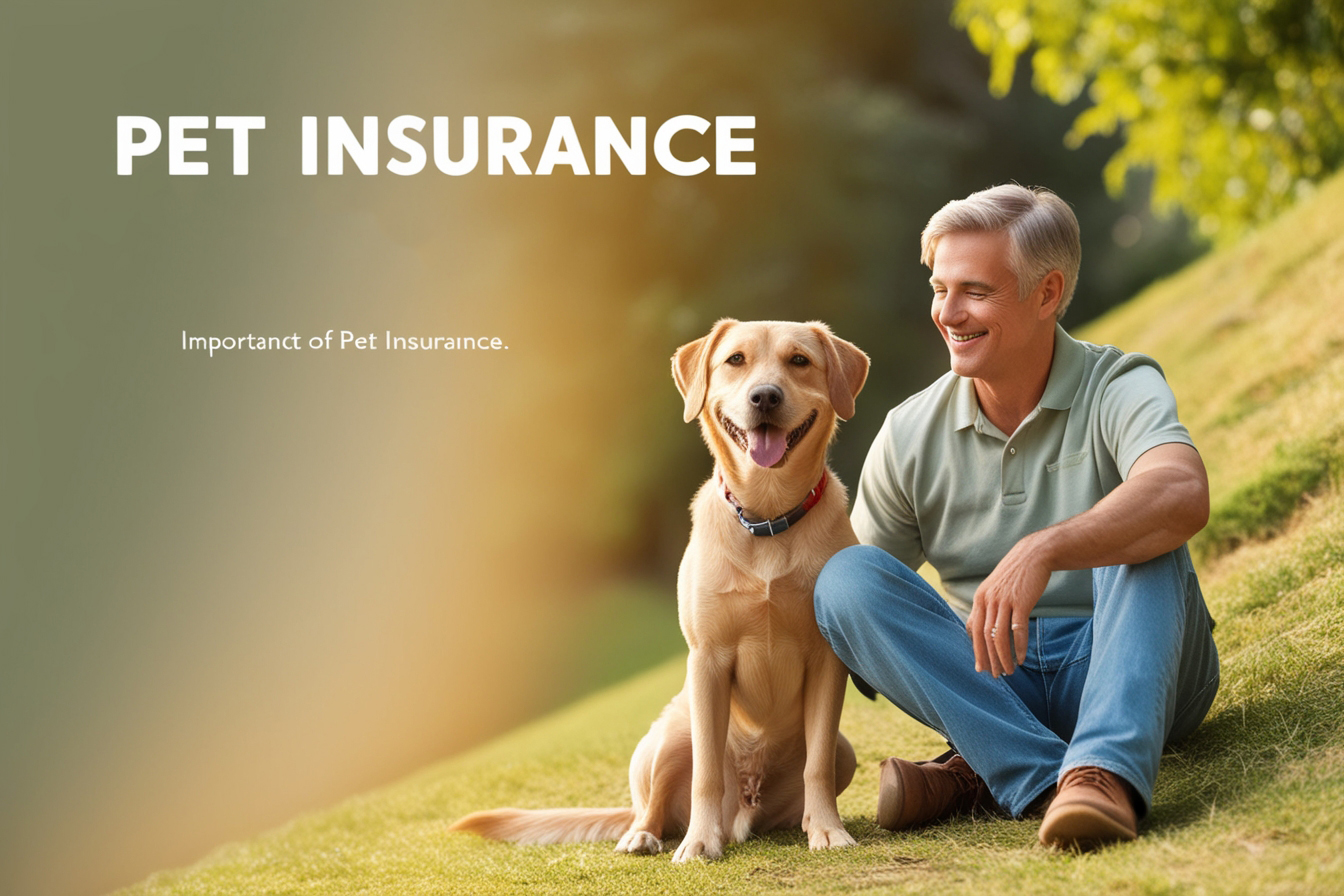From being a niche product, pet insurance has transformed into a vital aspect of responsible pet ownership for millions of households. Expensive veterinary care, advancing rapidly today, teaches a pet owner to take considerable measures of protection against unforeseen medical costs affecting his furry friends. As of 2024, pet insurance continues to evolve and bring about more options, coverage, and benefits than ever before. However, in terms of pet insurance, navigating the very complex world may seem daunting for new pet owners.
This article explores the landscape of pet insurance 2024: how does it work? What do you look for in a policy? What types of coverage are there? And most importantly, what is the most important thing to consider when choosing an insurance plan for your pet? The Surging Popularity of Pet Insurance
Pet insurance is just one of the aspects that have continued to experience tremendous growth in the pet industry in the past few years. As pets become valued members of the family, more owners are willing to spend money on taking care of their health. According to the American Pet Products Association, spending on pets crossed the $136 billion mark in 2023. Veterinary care was substantially spent on in this regard.
The cost of veterinary care is increasing, and this has played a key reason behind the high demand for pet insurance. Those surgeries, cancer treatments, and emergency care can go up to thousands of dollars; therefore, insurance steps in as a comforter for such pet owners. Because of this reason, more and more insurers are flooding the market with diverse plans that suit the needs of most pet owners.
Why Pet Insurance is More Important Now?
Now, the veterinary cost is rising year after year. Now, advanced medical treatments are given to pets such as MRI, chemotherapy, and complex surgery. So, high veterinary costs can be brought into relief for pet owners with pet insurance.
Longer lives for pets: Improved diets, better care and the advancement of medicine in medical science translate to pets living longer. They are likely to suffer from some chronic condition such as arthritis, diabetes, or cancer. Pet insurance would help manage costs associated with these chronic conditions.
More Pets In Homes
Following the surge in adoption rates as people adopt pets to keep them company during the coronavirus, there are now more families who are seeking protection for their pets through insurance.
Sudden emergencies
Pets can get sick or can have accidents on the spur of the moment. Pet insurance offers a safety net that helps one prepare for such accidents.
How Pet Insurance Works?
Pet insurance works the same way as human medical insurance. Pet owners pay a monthly or yearly premium against a contingency of hospitalization and other medical care for their pets in return for covering all their medical expenses. When any pet goes in for medical attention, he would be charged by the vet, and then a claim is submitted to the insurance agency for reimbursement according to the terms of his policy.
Basic Ingredients of Pet Insurance
Premiums: the sum the pet owner pays every month or year to get insurance. Premiums are based on various factors, which might include the breed, age, location, and level of cover of the pet that is sought.
Deductibles
The amount that the owner of a pet is to pay, from pocket money before the insurance coverage can commence. Deductibles can be annual or per-incident, depending on the policy.
Reimbursement Percentage
It is the percentage your vet bill will be reimbursed by the insurance company after meeting your deductible. Regular reimbursement rates range from 70% to 90%.
Annual or Lifetime Maximums
Some policies have annual or lifetime maximums on how much they will actually pay out in any given year or over the lifetime of the pet. After this cap is met, owners will have to pay all other costs.
Types of Animal Insurance Coverage
Available in different kinds, pet insurance coverage comes in various types suited to meet specific needs. Knowing the options can guide owners as they make the most suitable choice for their pets.
Accident-Only Coverage
Accident-only is one of the less comprehensive kinds of insurance for your pet. It pays for medical costs caused by accidents, such as broken bones, ingestions of poison or being hit by automobiles. Such plans are usually cheaper than a comprehensive plan but will never include illness or regular care.
Best for: This is ideal for pet owners who have a tight budget or pets that do not risk diseases but could be at risk to accidents.
Accident and Illness Coverage
It is the most common type of pet insurance. It gives cover to accidental and illness conditions. That includes conditions such as cancer, diabetes, infections, and hereditary disorders as well as illness and accident. This coverage protects pets to a greater extent than the others and suits any pet owner who prefers to protect against both accidents and unforeseen illnesses.
Best for: Anyone wishing to have all-around coverage in case of injuries and diseases.
Comprehensive (Wellness) Coverage
More extensive coverage, sometimes referred to as wellness or preventive care coverage, might include treatment for accidents and illnesses, but may also include routine and preventive care. Routine and preventive care can include vaccinations, flea and tick treatments, annual check-ups, dental care, and even spaying or neutering. This coverage is more costly but will help the pet owner plan for and manage routine costs of keeping that pet healthy.
Most Suitable For
Owners who want a comprehensive plan for their pet, covering all the health requirements of their cat or dog and incorporating preventive measures as well.
Time-Limited Policies
Time-limited policies cover the condition or treatment for a definite period of time, normally 12 months. If after that time, the pet still has that condition, then no more protection is given from that condition even if the pet continues to need treatment. Of course, these policies are less expensive but less protection is given on a long-term scale.
Suitable for: Dog and cat owners who prefer quicker covers, or those who feel that the pet is unlikely to have any disease condition that will remain throughout its lifetime.
Lifetime (Indemnity) Policies
Lifetime policies cover chronic and recurring conditions such as allergies, arthritis, or diabetes and extend throughout a pet’s lifetime. Time limits on the payout claims are not offered under these kinds of insurance, but annual payouts on claims may be capped.
Suitable for: pet owners who are seeking long-term coverage of chronic illness and willing to pay a premium fee for a more costly policy.
Factors to Consider When Choosing Pet Insurance
This includes breed, age, coverage limits, and exclusions on a particular policy. Since the varieties of policies increase, so do the choices that pet owners have in 2024, which makes an evaluation for a particular type of need to be considered before settling on a policy.
Breed-specific considerations
Some breeds have a predisposition to certain health problems. German Shepherds, for example, might be at a higher risk for hip dysplasia because they are larger dogs. For the smaller Chihuahua, dental problems might be the problem. Similarly, there are breeds of cat predisposed to respiratory conditions; Persian cats, for example. The insurance premiums by and large will reflect these risks, so it pays for pet owners to know about breed-related conditions and insist that the policy cover them adequately.
Age of the pet
Pets that are older than others will develop other issues of health, which makes them pay more premiums. Most insurance companies do not cover pre-existing conditions, which will require you to enroll when your pet is still a puppy or young, which will provide the most value from a policy. That said, some insurance companies offer policies suited for older pets, targeting age-related conditions.
Pre-Existing Conditions
These policies rarely cover pre-existing conditions-health conditions existing prior to the start of the policy. Owners should investigate whether the chosen policy features waiting periods or exclusionary provisions for certain types of conditions. If a pet suffers from some known condition, it may be possible to obtain limited coverage, though it may be expensive or of exclusionary nature.
Exclusions and Coverage Limits
The pet owner would be wise to discuss exclusions and coverage limits with the insurance agency. Common exclusions include:
Pre-existing conditions
Routine care – unless a comprehensive plan is chosen
Cosmetic procedures such as docking of the tail or cropping of the ears
Breeding or pregnancy-related expenses
The limitation of coverage, like annual cap or the per condition cap can reduce the payout by the insurance company for a particular treatment. While in 2024, almost all health insurance companies are offering flexible plans so that the pet owners can choose the coverage limits according to the budget and requirement.
Reimbursement and Deductible Options
Policies come with different deductibles and reimbursement levels. The very low deductibles cause high premiums, but much lower expenses on out-of-pocket claims. Reimbursement percentages that are larger-the more extreme examples being 90% or even 100%-increase a premium cost but keep costs after a costly vet visit much more reasonable. It’s all about finding the balance between deductible and reimbursement levels to maximize the value offered by a pet insurance policy.
Innovations in Pet Insurance 2024
Pet insurance competition has resulted in innovative ideas to involve pet owners. As popularity increases, pet insurance policies have become more personalized and customer-friendly with 2024 incorporating technology and personal services into a customer experience.
Telemedicine for Pets
Telemedicine has become a part of most pet insurance policies. This is the service through which, in situations not requiring an emergency response, pet owners can consult veterinarians using video call or a chat app. Getting expert advice without having to visit the vet’s office is convenient – in most cases, included free of charge with the policy.
Wearable Technology
Wearable devices capable of recording the activity levels, heart rate, and other health metrics of a pet are gaining popularity. Some insurers offer discounts or even perks to the policy holders who use these devices since they would be able to track the health of the pet and maybe catch early warning signs of some problems. The devices also provide information for insurance policies to be customized according to the health status of the pet.


Really Well Written Content my Dear! Thanks for the Info.
Amazing Information For The Scrabber’s
Excellent Effort
good work dear
Thankyou I get my point
Nice article writing
great work
Impressive data
good work buddy
Best Collection Of Data
good keep it up
Great
nice content
Amazing
Amazing work keep it up
Fantastic work doing Dude
Well Written
Well Written Data
Thanks for the Best Info
well contentt
Amazing work keep it up
Nice